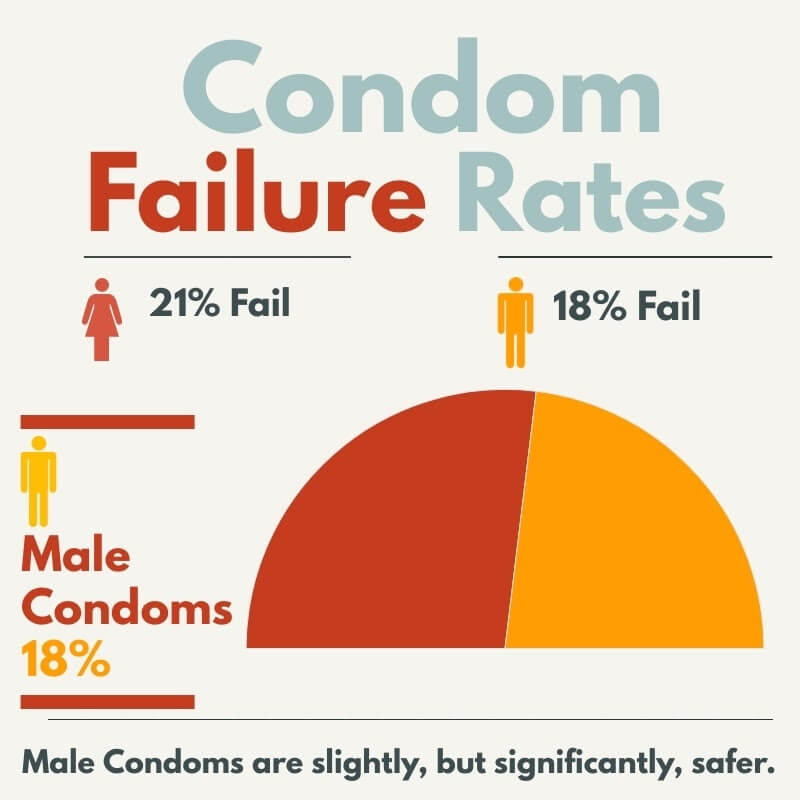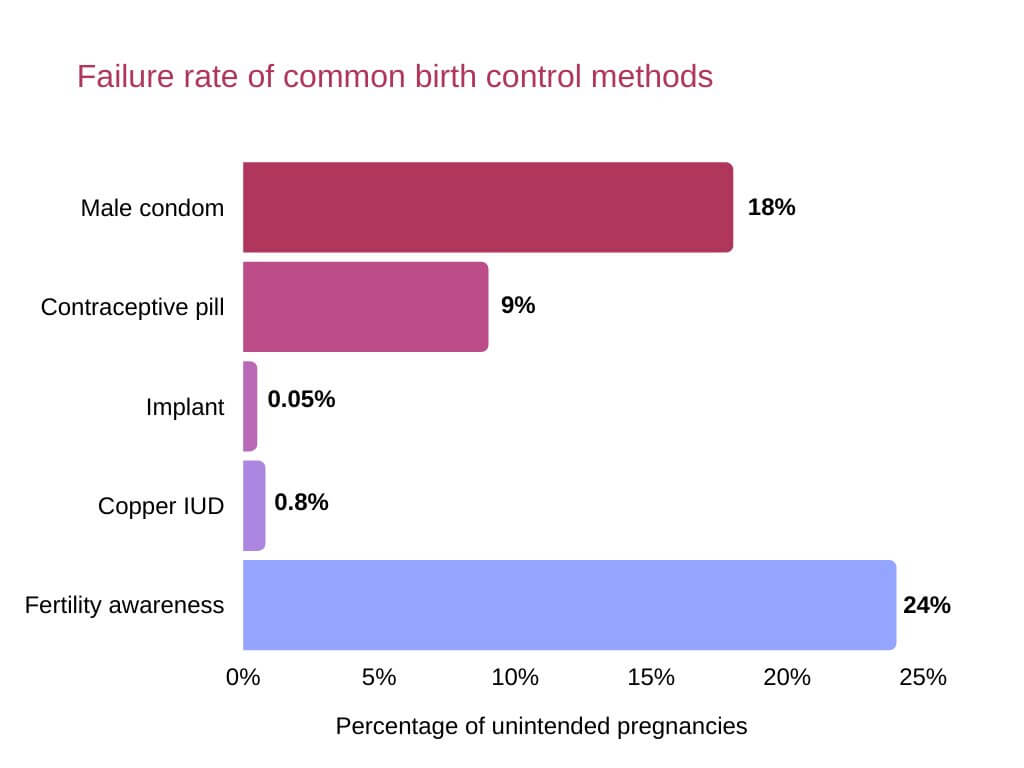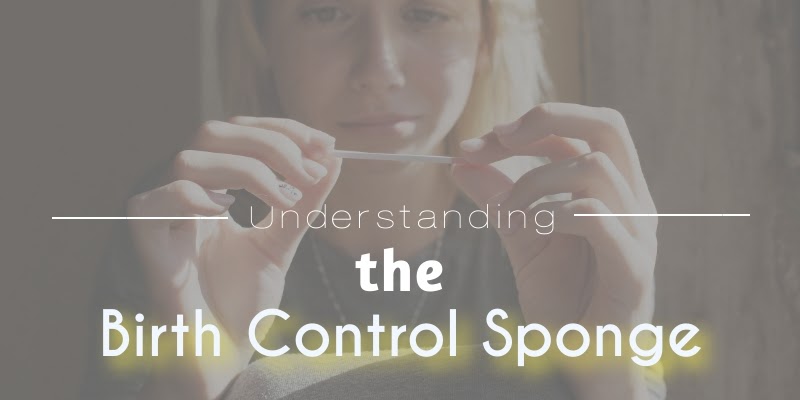
Birth control pills historically revolutionized the rights and opportunities of women around the world. But for anyone who has taken hormonal contraceptive treatments, you understand that there can be annoying side effects.
Natural family planning, commonly known as fertility awareness or the calendar rhythm method, has been gaining popularity as an alternative method of family planning and is excellent for those trying for a baby. In this article, we discuss what’s involved in natural family planning to help you make a decision right for you.
Key Takeaways
- Natural family planning (NFP) methods are a way to track signs of fertility throughout your menstrual cycle. You have sex at specific times to either avoid pregnancy or try to get pregnant.
- When used correctly, natural family planning methods are an effective way of avoiding pregnancy, especially when used in conjunction with other birth control options such as condoms or caps.
- It takes 3–6 months to learn this method.
- Due to it being a hormone-free method, there are no physical adverse effects, and it is a good way to understand your level of fertility or reproductive cycle.
- Always use condoms as well to avoid sexually transmitted infections (STIs).
- Fertility awareness based methods are a good way to get in touch with your body’s natural functioning. They can help couples who are trying to conceive.
What Is the Fertility Awareness Method?
Also known as the symptothermal method, this method means tracking the signs that show what stage you are in your menstrual cycle to either avoid getting pregnant or to increase your chances of pregnancy.
How Does It Work?
You have to keep a daily record of your fertility signals, such as your temperature and the fluids coming from your cervix, or cervical mucus. There are a few different methods to ensure you are tracking your cycle effectively, detailed in the next few sections.
Methods of Natural Family Planning
The main ways to track your fertility are the:

- Calendar method.
- Cervical mucus method.
- Standard cycle days method.
- Basal body temperature method.
Natural family planning is typically most effective if you use all of these methods at the same time. It involves gathering your own personal data for a few months to figure out when you are at your most and least fertile.
Menstrual Cycle and Ovulation
During your menstrual cycle, there are fertile days and other times of your natural cycles when you are less likely to conceive. The average woman has a 28-day cycle, within a range of 24–32 days, although some have more irregular cycles. Cycle length is calculated from the first day of your period to the beginning of the next one.
During your period, or menstrual bleeding, you are the least likely to get pregnant, while during the window of ovulation, usually around days 11–14, you are at your most fertile time.
Ovulation is when the ovaries release an egg into the fallopian tube. The egg then lives in the fallopian tubes for 24 hours, and if it goes unfertilized, does not survive. Therefore the fertility window, in reality, is very small, but the trick is knowing exactly when ovulation will occur.
Monitoring Cervical Mucus
At different times in your cycle, the mucus from your cervix changes in color and consistency. At the beginning and end of your cycle, the cervical mucus is typically white and drier, whereas during the fertile days, many women have clear, slippery mucus. The cervical mucus method simply involves being aware of what your cervical mucus looks like throughout the month.
Many women may also experience spotting when they ovulate. This is when small spots of menstrual blood appear in the middle of the menstrual cycle, signaling their fertile days.
Calendar Method
Also known as the rhythm method and calendar rhythm method, this is a way for women to track ovulation times based on their own menstrual cycle and avoid unprotected sex when they ovulate.
If you track how many days your cycle is for a few months, based on when you start your period to the next one, you can figure out how long your average cycle is, and the most likely time you have ovulated. This method alone is not very effective at preventing pregnancy and is best used together with cervical mucus and the tracking basal body temperature method [1].
Standard Days Method
The Standard Days Method (SDM) recommends that there is a 12-day fertile window during which women with regular menstrual cycles (26–32 days long) should abstain from sexual intercourse or use a barrier method, such as condom or cap, to prevent pregnancy. It is simply calculated by mapping the 12 days in the middle of the cycle, between each period [2].
Temperature Method
The temperature method, known in women’s health literature as the basal body temperature (BBT) method, involves measuring your body temperature at the same time every morning when you are resting. It should be done before you get up and before you eat or drink anything.
It is used because there’s a slight rise in body temperature after ovulation. Therefore, when you chart your temperature, look out for a rise of 0.4°F, up from the week before. If you have detected a slight rise in your temperature, it is likely that your fertility window has finished for this cycle.
On which two days prior to basal body temperature rise is the chance of conceiving the highest?


Effectiveness of the Fertility Awareness Method
Done correctly, fertility awareness methods can be an effective way to prevent pregnancy. Failure rate is only 1–2%. If, during your fertile window, you abstain or avoid sex, it is unlikely that you will get pregnant. If you are trying for a baby, the fertility awareness method would be the first step to influencing when you conceive.
Preventing Pregnancy
When tracked correctly, natural family planning methods are highly effective for avoiding pregnancy: 98–99% of women did not conceive while using the natural family planning method, according to a comprehensive fertility study [3].
However, if fertility awareness methods are not followed accurately, they can lead to unplanned pregnancy. Remember, getting the methods right takes practice and commitment!
Which contraceptive method do you think is the most effective?


When you have figured out when your fertile times, remember to use condoms, the cap, or diaphragm when you have sex, or at least use the pull out method. Just in case, try to keep some emergency contraception at hand too.
Keep in mind that emergency birth control is a hormonal treatment and affects your cycle. If you take an emergency contraceptive pill, you have to use barrier contraception for two complete menstrual cycles before natural family planning is effective again.
Getting Pregnant
If you are trying to get pregnant, the natural family planning method is an excellent way to get in touch with your level of fertility and knowing when to time sex, increasing your chances of conception.
Is Natural Family Planning for Me?
Benefits
There are some key benefits of natural family planning:
- There are no side effects or health risks as with medical contraceptives.
- It is a hormone free method and no chemicals are used, as with birth control pills or hormonal contraceptives.
- With correct information, practice, and advice, most women can track ovulation.
- No follow up medical appointments are needed for the technique, once you have learned how it works.
- The methods give you more control over your reproductive system and involve your partner in the process, which can have benefits to the relationship and your mental health.
- Natural family planning is the only type of family planning that includes both preventing pregnancy and aiding conception.
- Monitoring your vaginal discharge makes you more aware of your reproductive health and may help you recognize abnormalities, such as if you have a sexually transmitted infection.
Disadvantages
- For 12–16 days in the month, you have to abstain from sex or use condoms, the cap, or pull out method, which some couples can struggle with.
- Fertility awareness based methods do not protect against STIs.
- There is a lot of room for mistakes, if you are not tracking correctly.
- The method takes a few menstrual cycles to practice for you to control it effectively. Until then, you have to use condoms or caps.
- Fertility signs have to be tracked consistently every day, which is not convenient for everyone.
- Your cycle can become unpredictable if you are very stressed, there is a dip in your health, or you are lactating, in which case natural family planning methods should be reconsidered.
Lactational Amenorrhoea Method (LAM)
Lactation Amenorrhoea Method (LAM) refers to the time of infertility many women experience after having a baby and is a natural method of birth control. Intensive breastfeeding for the first six months after birth can stop ovulation, which some fertility research claims to be 98% effective in preventing pregnancy. However, it has received some criticism in other studies [4].
Is LAM Reliable?
Failure rate of LAM increases the closer the baby gets to six months old, so it is a good idea to start using other methods of contraception from five months after birth. Also, if you start weaning your baby early or feed them formula milk, your milk flow decreases and the LAM method becomes less of a guarantee to prevent pregnancy.
FAQ
Does the Fertility Awareness Method Work?
Yes; however, for it to be effective in stopping pregnancy, you have to keep track of all the fertility signs and use other contaceptives or abstain from sex during your fertility window.
How Is Fertility Awareness Based Method Used?
You track your body’s natural functioning and find signals that tell you when you are fertile, then avoid unprotected sex during the time that you are ovulating.
How Many Days Before and After Menstruation Is Safe?
It depends on your cycle. You technically cannot conceive during your first few menstrual bleeding days, but just at the end or after your period there is a chance you will, read more in can you get pregnant on your period.
Conclusion
It’s difficult to find a method of birth control that’s perfect. For a hormone-free method, natural family planning could certainly be an alternative to other forms of contraception.
However, do your best to use the birth control method correctly, by following all of the guidance, especially if you are trying to avoid pregnancy! If getting pregnant is something you want, this technique will definitely be of interest to you, but if it does not work and you are concerned about your reproductive health, always refer to a fertility specialist.
References:
- [1] Johnson, Sarah, et al. “Can Apps and Calendar Methods Predict Ovulation with Accuracy?” Current Medical Research and Opinion, vol. 34, no. 9, 2018, pp. 1587–1594., doi:10.1080/03007995.2018.1475348.
- [2] Weis, Julianne, and Mario Festin. “Implementation and Scale-Up of the Standard Days Method of Family Planning: A Landscape Analysis.” Global Health: Science and Practice, Global Health: Science and Practice, 30 Mar. 2020, www.ghspjournal.org/content/8/1/114.
- [3] Frank-Herrmann P;Heil J;Gnoth C;Toledo E;Baur S;Pyper C;Jenetzky E;Strowitzki T;Freundl G; “The Effectiveness of a Fertility Awareness Based Method to Avoid Pregnancy in Relation to a Couple’s Sexual Behaviour during the Fertile Time: a Prospective Longitudinal Study.” Human Reproduction (Oxford, England), U.S. National Library of Medicine, pubmed.ncbi.nlm.nih.gov/17314078/.
- [4] Van der Wijden, Carla, and Carol Manion. “Lactational Amenorrhoea Method for Family Planning.” The Cochrane Database of Systematic Reviews, John Wiley & Sons, Ltd, 12 Oct. 2015, www.ncbi.nlm.nih.gov/pmc/articles/PMC6823189/.



























